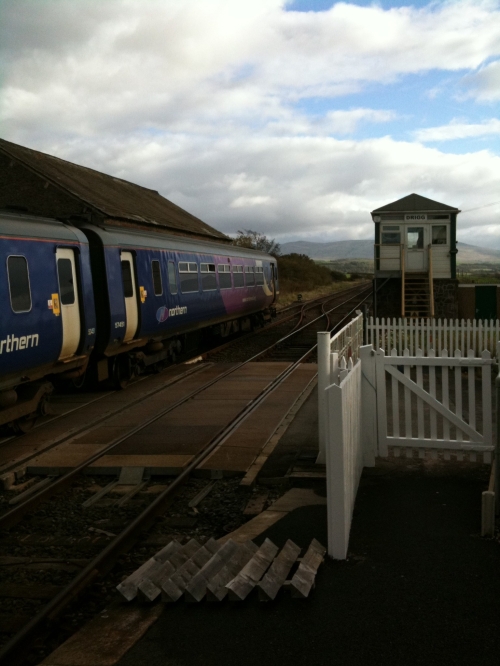
Distant Wasdale
The best way to reach the lakes? The snaking, traffic-trodden M6? Crammed up against a beer-bellied chap with a large bag on a west coast mainline train to Oxenholme or Penrith, then begging a lift? How about none of the above?

Lost in the world of modern railways is the Cumbria Coast Line, a two-coach throwback to another era, complete with request stops, signal-box attendants who double as gate-keepers for level crossings and an abundance of wonderful scenery. You’re probably not surprised by the looming, brooding fells – though Cumbrians are a no-nonsense bunch and you won’t see poets scribbling lines in awe of the hills on board – but the delicate wetlands, estuaries and tidal flats of the coast are less celebrated. Yet this is a journey to savour.
In fact, the Cumbria Coast line may save you time too. The south-western fells around Wasdale are notoriously time-consuming to get to from the motorway. If Langdale and Borrowdale are an hour from the big roads, Wasdale can be close to double that. Ravenglass, Drigg and Seascale are all ten miles or so from the western tip of Wasdale, and can be reached from London, with kind connections, in four and a half hours.
The lakes unfold slowly and deliberately. Just north of Lancaster station, where you’ll leave the main line unless bound to do so at Preston by a service running fewer options, you’ll get your first view if the mountains glowering at Morecambe Bay. Though this is the best known of the tidal flats n the Lancashire and Cumbria coasts it is by no means the only one. Carnforth, famous as the setting for Brief Encounter, is next, with rusting boilers from steam engines sitting alongside mighty diesels at Steamtown, an open-air museum dedicated to locos from the past. At Barrow-in-Furness, where the Royal Navy’s submarines are built you change from the zippy sprinters services to the Cumbria Coast line proper.
There’s more for rail-buffs of all ages at Ravenglass, close to my one journeys end. Here L’al Ratty, a narrow-gauge railway, climbs up to eskdale on a very scenic journey. Muncaster Castle next door offers tamer appeal, with gardens alive with colour year round.

Request a stop at Drigg and have the station to yourself
The route crosses some of England’s most isolated spots, hiding amidst the folds of assorted Lakeland river estuaries, the North Sea and the cloud-covered Fells. The sun is intermittently blinding with the kind of fresh, sharp light that rain and breeze puts into sharpest focus. Who needs to travel this beautiful stretch of the Cumbrian coast on a Thursday afternoon, bound for Ravenglass, Seascale and Carlisle? No-one except me it seems. So I have the train to myself until I get off at Drigg, a request stop. Requesting it seemed to surprise the Guard, whose tone of replying ‘really?’ to my request lends me to think that either no-one ever does or that it’s really not my kind of town. To my right, the bracken is a bright orangey-brown on steep, hummocky hills.

Burnmoor Tarn, reached via the Old Corpse Road from Wasdale
The highlights of this journey are many. On the first leg to Barrow in Furness, the crossings of the Kent and Leven viaducts are astonishing, ever-changing vistas. Water and mountains are everywhere yet the train appears suspended, almost floating above it all. It looks more like the north-west of Scotland than the Lakes. A golf course with links on rocky promontories looms into view, then quickly passes. Wading birds find safe havens in the oxbows and inlets, the seagrass and sands out the window.

Oliver’s Gill: good scrambling
As I get off at Drigg, I wait while the train pulls away bound for distant Sellafield, Whitehaven and Carlisle. There’s much more to explore on the coast, but I’m headed inland via a wonderful road where the mountains reveal themselves through folds of foothills. And then there it is: Wastwater. Not the biggest, not the most spectacular of the lakes but for me, the one that takes the prize as the biggest classic. As I slowly cycle its length to journeys end, the calm of England’s greatest landscape is already working its magic. If I were to stay forever would anyone mind?

Wasdale sunset








